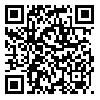BibTeX | RIS | EndNote | Medlars | ProCite | Reference Manager | RefWorks
Send citation to:
URL: http://ijict.itrc.ac.ir/article-1-197-en.html
To benefit from the advantages of information society on one hand, and afraid of being left further behind of Global Society and increasing in the digital divide on the other hand, stimulating countries to become inclusive Global Information Society. These issues have led policy makers to move towards such society by identifying the objectives, goals and targets. Planning for achieving these objectives needs a real understanding of current situation that can be obtained by information society measures. There has been a proliferation of information society measures in recent years that each of them follows a certain objective. This paper elaborates and categorizes these measures that help scholars and policy makers to 1) select the measures that fitted with their objectives, 2) prevent the repetitive researches, 3) identify the defects and flaws of previous measures and correct them in their own measures, 4) use the experiences of previous measures for constructing their own ones. In this paper, e-measures are classified in three categories: Digital Divide, E-Readiness, and Core ICT Indicators. The categorization of e-readiness measures are based on definitions of e-readiness, objectives, methods and results. Also, digital divide measures are categorized based on potential factors that include cross-sector and cross-construct validation studies.
| Rights and permissions | |
 | This work is licensed under a Creative Commons Attribution-NonCommercial 4.0 International License. |




